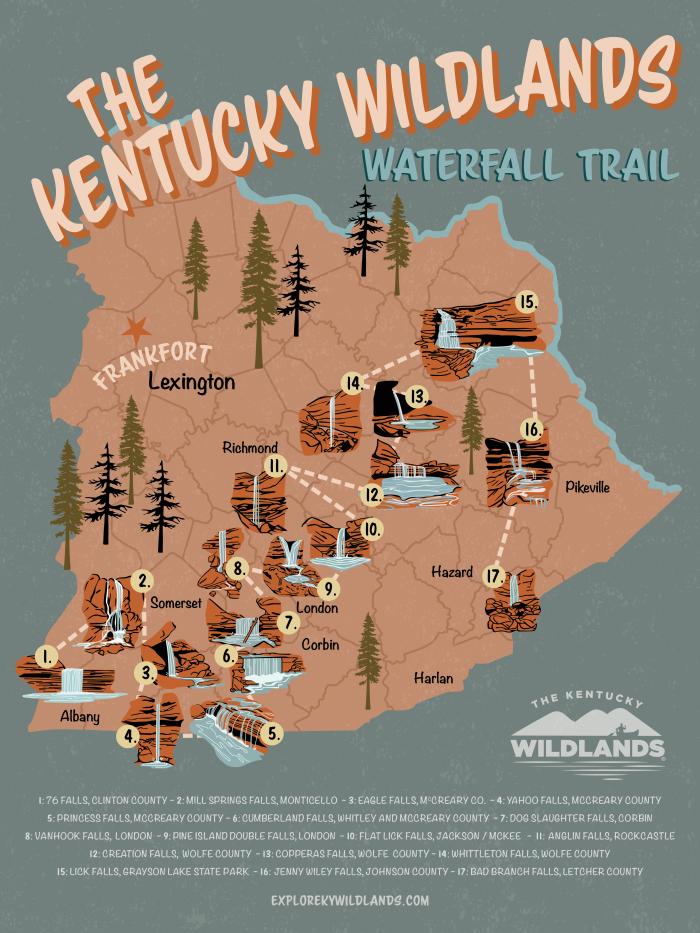What else makes up 73% of your brain? What else leaves an empty stomach 5 minutes after entering it? What can kill you in less than a week? It's water. World Water Week is not just the leading annual conference on global water issues, it is also a powerful movement for change. As water conservancy issues have arisen, so has the threat of losing this resource. The conference in Stockholm is held online, but members discuss major changes, political moves, and local practices that influence their countries' access and use of water.
More information about water conservancy in Kentucky and Appalachia:
Water in Kentucky: Natural History, Communities, and Conservation
Home to sprawling Appalachian forests, rolling prairies, and the longest cave system in the world, Kentucky is among the most ecologically diverse states in the nation. Lakes, rivers, and springs have shaped and nourished life in the Commonwealth for centuries, and water has played a pivotal role in determining Kentucky's physical, cultural, and economic landscapes. The management and preservation of this precious natural resource remain a priority for the state's government and citizens.
The Robinson Forest environmental monitoring network: Long‐term evaluation of streamflow and precipitation quantity and stream‐water and bulk deposition chemistry in eastern Kentucky watersheds
Through a partnership between the U.S. Geological Survey (USGS) and U KY, daily precipitation data for six stations and stream data from four watersheds in Robinson Forest have been compiled for 1971–2018, checked for transcription errors, and annotated for changes in methodologies. Preliminary results indicate that these data present a valuable opportunity to evaluate linkages among atmospheric deposition and stream chemistry, the effects of environmental policy, such as the Clean Air Act, and effects from nearby land disturbance in the form of surface mining. Furthermore, these data fill a geographic and physiographic gap in what is available to examine deposition and streamflow patterns over the last 45 years, supplementing those long‐term records of research sites in northern (e.g., Hubbard Brook Experimental Forest), central (e.g., Fernow Experimental Forest) and southern Appalachia (e.g., Coweeta Hydrologic Laboratory). As an oasis in the midst of significant surface mining activity, Robinson Forest presents a unique opportunity to understand environmental conditions characteristic of minimally disturbed forests similar to pre‐mining conditions in the Central Appalachian region.
"As Long As We Have the Mine, We'll Have Water": Exploring Water Insecurity in Appalachia
Water insecurity is a condition when affordability, reliability, adequacy, or safety of water is significantly reduced or unattainable resulting in jeopardized well‐being. Throughout the Appalachia region, water access and quality are compromised as a result of contamination from extractive industries (such as coal mining) and failure of infrastructure investment. The water problems have been reported by journalists, activists, and social and natural scientists who describe a reliance on discolored, sulfuric, and sometimes toxic water to meet household needs. In this article, we build upon applied anthropology studies of human–environment interaction to answer the exploratory question: "Do patterns about water acquisition and consumption exist in Appalachian Kentucky?" Our methodologies included participant observation and informal go‐along interviews at three sites based on convenience.
Self-Reported Consumption of Bottled Water v. Tap Water in Appalachian and Non-Appalachian Kentucky
Quantitative studies on drinking water perceptions in Appalachia are limited. High-profile water infrastructure failures in the U.S. and Eastern Kentucky, coupled with human-made and natural disasters in the Appalachian Region, have likely impacted opinions regarding tap water. Among Appalachian (n=356) and non-Appalachian (n=1,125) Kentucky respondents, a significantly higher frequency of Appalachian Kentuckians reported drinking bottled water more often than tap water relative to non-Appalachian Kentuckians (57% v. 34%; X2 p < 0.001). These results warrant further investigation into tap water aesthetics in Appalachia, bottled water consumption impacts on personal finances, and approaches to build public trust for public drinking water among multiple populations including Appalachian Kentuckians.












